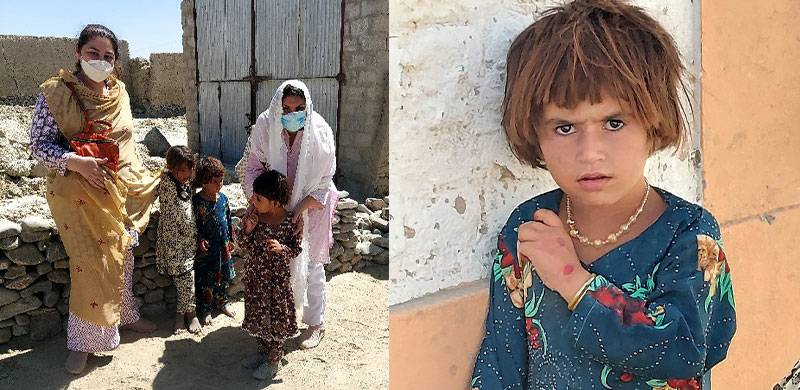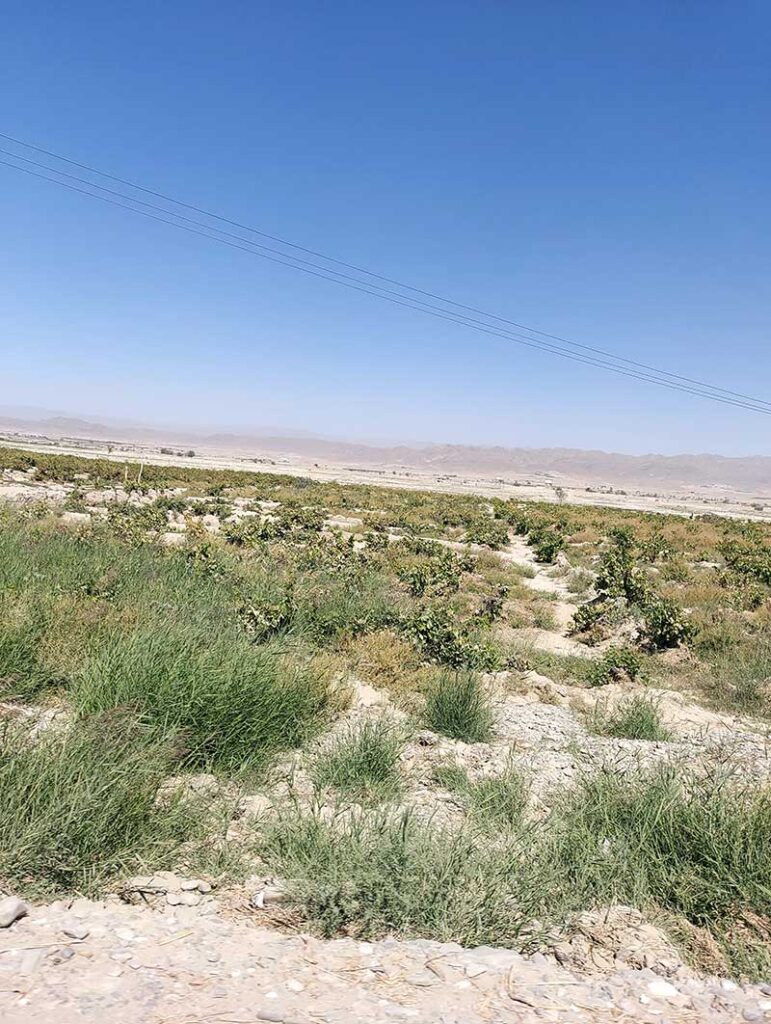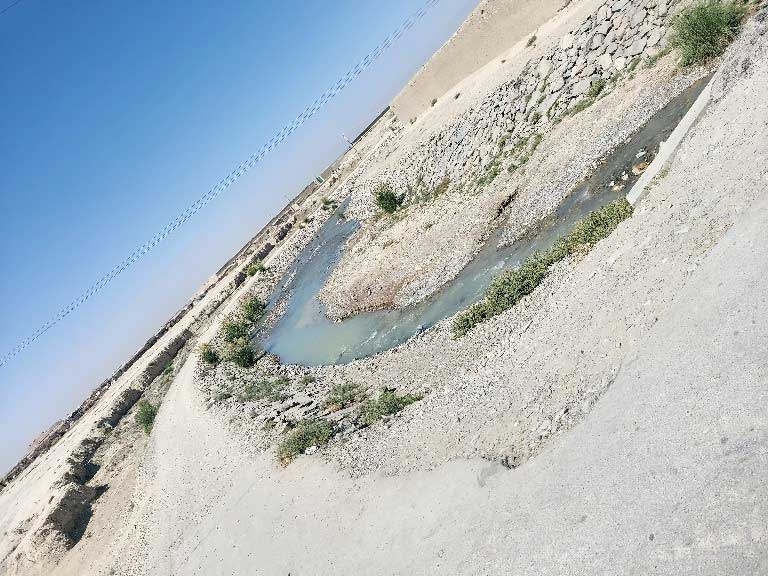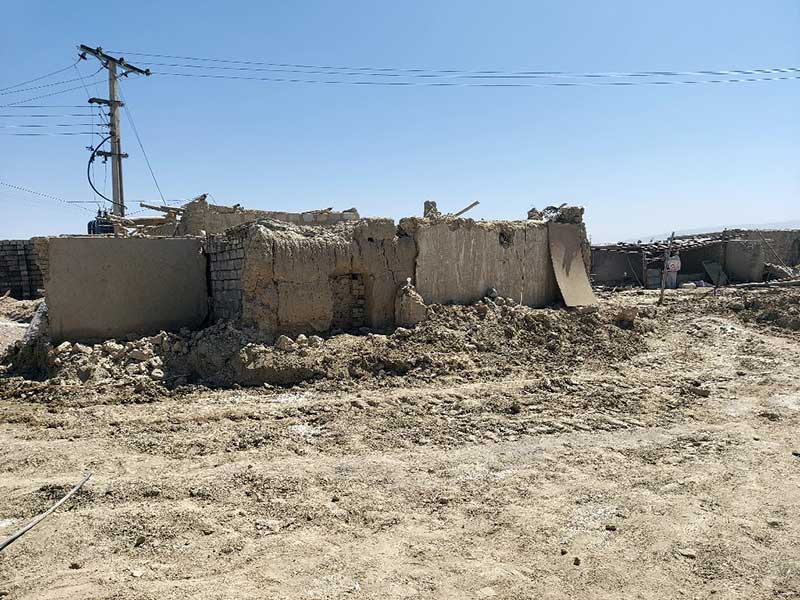
Returning to Balochistan in September 2022 after 14 years brought with it multiple memories -- both personal and professional.
My last visit was in 2008, when my paternal grandmother passed away. Earlier, I had worked on the flash floods caused by cyclone Yemyin in 2007, which took me to districts Mastung and Kalat. Memories of that time came flooding back on my current visit.
As I drove to villages Hameedabad and Ismalzai in district Pishin, a sense of the familiar juxtaposed with never before seen sights -- of damaged fruits and crops. I wanted to meet the families in villages most affected and see what their needs were and provide some direct assistance, because I have the privilege of accessing areas most Pakistanis have not been to or read about.


For most people, Balochistan represents a far off, mysterious landscape. Neither the state nor its leaders have looked after its inhabitants. Will this catastrophic disaster caused by climate change bring the right kind of attention they deserve?
Some 14 out of 16 districts have been affected in Pishin. While Provincial Disaster Management Authority (PDMA) and Benazir Income Support Programme (BISP) have come to the villagers, but not in the most effective way. The PDMA is based in Quetta. It has a ‘siyasi approach’ when doing surveys on crop damage. When it comes to the BISP, an institution that started out with great promise (and for which I worked with in its early days via the World Bank), has now been tarred with the brush of giving out Rs25,000 to undeserving beneficiaries due to a manipulated data base. This means that a survey will have to be carried out again to ensure that targeted population receives the funds.
What’s interesting is that because of how climate change has played havoc with mud houses, livelihoods and health, most families in villages Hameedabad and Ismailzai had moved to Karachi. When they will return one cannot say. It did make me wonder how population pressure in Pakistan’s most heavily populated city would hold up with further internal migrants.
The few families who remain in the village showed me around their property and homes, cracked walls and receding water that have left debris in its wake. A lot of wilted grape leaves on their property and fallen apples are being sold in local bazaars. Sometimes it takes the most ordinary things to make you feel poignant about a place. Now with climate change, floods, and apathy towards the most poor, you see little hope.

So, here we are. Why are we not tapping into the country’s institutional memory regarding flood preparedness? I worked on this in 2007 in Balochistan and in 2010 in southern Punjab as a shelter cluster coordinator with the government and the UN agencies. How do I see the situation now? We need to invest in water management systems to manage overflow of water -- a blessed commodity in this parched province. This is for the short-term and long-term. Providing medicines, NFIs, health and hygiene kits can only go so far, and while we are there, whatever one can give is far from enough.
How will we deal with climate change in years to come? The trust deficit between the people and government is already so wide, but while we’re at it there is something that can be done. Climate change is not solely a natural disaster phenomenon; human influence, greed and apathy contribute towards it. Here are some solutions or ways to relieve the stress of the flood affected:
At the end of the day, elder generations will come and go, INGOs will be here one year and not another, but the burgeoning youth who will live in Pakistan need an education that will meet the demands of the climate catastrophe that looms ahead.
My last visit was in 2008, when my paternal grandmother passed away. Earlier, I had worked on the flash floods caused by cyclone Yemyin in 2007, which took me to districts Mastung and Kalat. Memories of that time came flooding back on my current visit.
As I drove to villages Hameedabad and Ismalzai in district Pishin, a sense of the familiar juxtaposed with never before seen sights -- of damaged fruits and crops. I wanted to meet the families in villages most affected and see what their needs were and provide some direct assistance, because I have the privilege of accessing areas most Pakistanis have not been to or read about.


For most people, Balochistan represents a far off, mysterious landscape. Neither the state nor its leaders have looked after its inhabitants. Will this catastrophic disaster caused by climate change bring the right kind of attention they deserve?
As I drove to villages Hameedabad and Ismalzai in district Pishin, a sense of the familiar juxtaposed with never before seen sights -- of damaged fruits and crops.
Some 14 out of 16 districts have been affected in Pishin. While Provincial Disaster Management Authority (PDMA) and Benazir Income Support Programme (BISP) have come to the villagers, but not in the most effective way. The PDMA is based in Quetta. It has a ‘siyasi approach’ when doing surveys on crop damage. When it comes to the BISP, an institution that started out with great promise (and for which I worked with in its early days via the World Bank), has now been tarred with the brush of giving out Rs25,000 to undeserving beneficiaries due to a manipulated data base. This means that a survey will have to be carried out again to ensure that targeted population receives the funds.
What’s interesting is that because of how climate change has played havoc with mud houses, livelihoods and health, most families in villages Hameedabad and Ismailzai had moved to Karachi. When they will return one cannot say. It did make me wonder how population pressure in Pakistan’s most heavily populated city would hold up with further internal migrants.
The few families who remain in the village showed me around their property and homes, cracked walls and receding water that have left debris in its wake. A lot of wilted grape leaves on their property and fallen apples are being sold in local bazaars. Sometimes it takes the most ordinary things to make you feel poignant about a place. Now with climate change, floods, and apathy towards the most poor, you see little hope.

So, here we are. Why are we not tapping into the country’s institutional memory regarding flood preparedness? I worked on this in 2007 in Balochistan and in 2010 in southern Punjab as a shelter cluster coordinator with the government and the UN agencies. How do I see the situation now? We need to invest in water management systems to manage overflow of water -- a blessed commodity in this parched province. This is for the short-term and long-term. Providing medicines, NFIs, health and hygiene kits can only go so far, and while we are there, whatever one can give is far from enough.
Providing medicines, NFIs, health and hygiene kits can only go so far, and while we are there, whatever one can give is far from enough.
How will we deal with climate change in years to come? The trust deficit between the people and government is already so wide, but while we’re at it there is something that can be done. Climate change is not solely a natural disaster phenomenon; human influence, greed and apathy contribute towards it. Here are some solutions or ways to relieve the stress of the flood affected:
- Make it compulsory for grade 10 school students to do some social service for two weeks. Provide a stipend and give credit for it in their academic record.
- Make the education syllabus reflective of climate change and build skills of our youth to manage it with a level of expertise.
- Equip female health workers, who have access to households, to link up with government agencies to minimize the risk of BISP’s Rs25,000 going into the wrong hands.
- Youth between ages 15 and 29 make up 30 percent of our population. Enrich them with skills and know-how that addresses geological and scientific related disasters.
- The glaring lack of INGOs in Balochistan is something I’d not seen before in former years. If this is how it’s going to be, then investing in our youth to do humanitarian work, be it distributing NFIs, tents, health and hygiene kits and medicines, needs to be put into practice but with an incentive for the youth.
At the end of the day, elder generations will come and go, INGOs will be here one year and not another, but the burgeoning youth who will live in Pakistan need an education that will meet the demands of the climate catastrophe that looms ahead.

